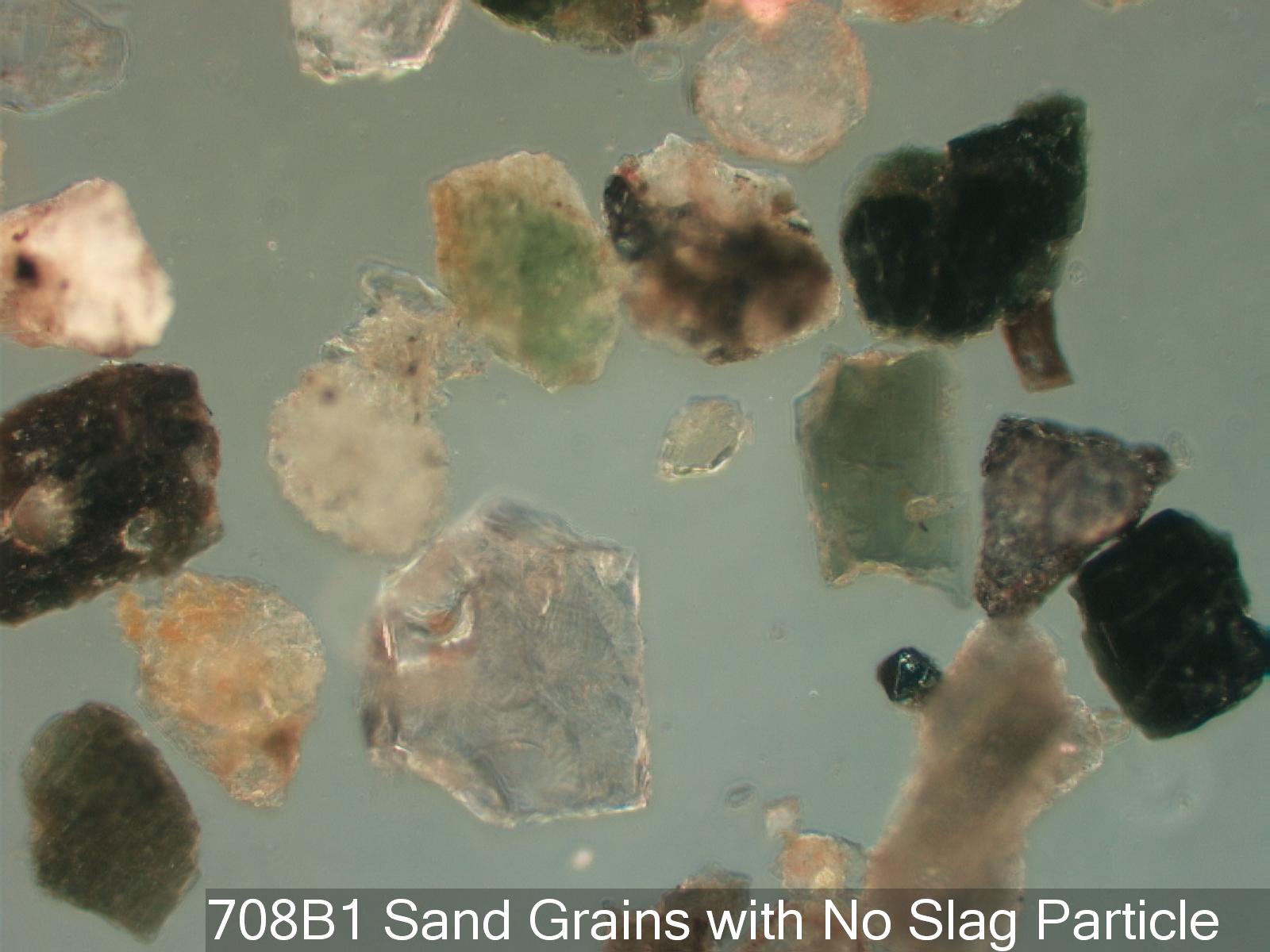Columbia River Beach Sand
Definition/Function:
This deposit sample was part of a study for the distribution of slag particles introduce into the Columbia River from a smelter upstream. A strandline deposit forms at a special boundary or interface. That boundary can be the site of wave action, current, or subsurface characteristics. Strandline deposits form on beaches and at the leading or trailing edge of air classified sand deposits.Significance in the Environment:
This sample of sand is from a strandline on a beach of the Columbia River and was collected 708 miles from the mouth of the river. It contains a grain of garnet (lower center), hornblend (middle right), numerous opaque grains (mostly magnetite and related iron rich oxides), and other minerals. The concentration of heavy minerals in this sample indicated that heavy materials, including smelter slag should have been concentrated at this site. This field of view contains no smelter slag.Characteristic Features:
Transmitted brightfield illumination results in the particles showing their natural transmitted color. For small particles the optical path length through the particle is very short so only the most strongly colored particles show color. This is the same field of view shown in one of the other photographs of this section using circular polarized light. In this field of view the natural dark green color of the hornblend can be seen.
Reflected darkfield illumination highlights reflective surfaces or optically heterogeneous materials or surfaces. Particles that scatter light because of their heterogenaity tend to take on an orange cast (the third particle from the bottom on the left side). The orange in the particle to the left of the larger garnet particle is due to the presence of thin surface films of iron oxide. Particles that specularly reflect light tend to be bright if the angle is correct, such as the highlights on the small black particle above the "S" in Slag.


